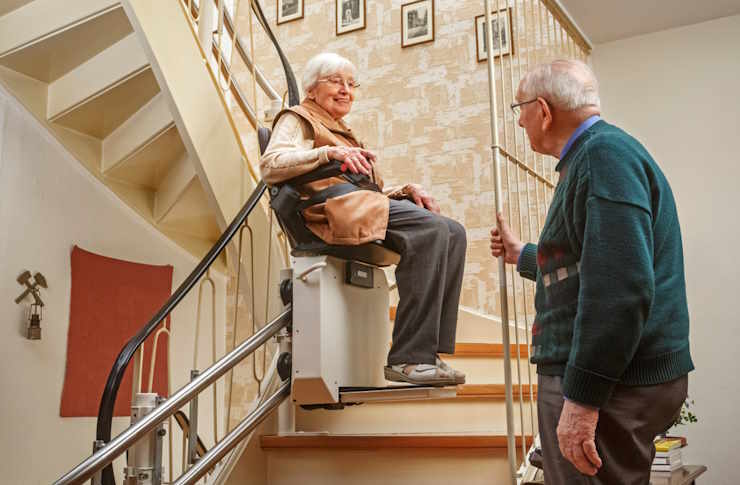Senior Apartments: Comfortable Living Solutions for the Elderly
As the population ages, the demand for suitable housing options for seniors continues to grow. Senior apartments offer a unique living solution designed to cater to the specific needs and preferences of older adults. These specialized residential communities provide a blend of independence, support, and social engagement, making them an attractive choice for many seniors looking to maintain their autonomy while enjoying a comfortable and secure environment.

-
Age restrictions: Senior apartments usually have minimum age requirements, ensuring a community of like-minded individuals.
-
Accessibility: These buildings are often equipped with features like elevators, grab bars, and wider doorways to accommodate mobility aids.
-
Community amenities: Many senior apartments offer on-site recreational facilities, social activities, and communal spaces to promote interaction among residents.
-
Maintenance services: Most communities provide maintenance and landscaping services, reducing the burden on residents.
What amenities and features can seniors expect in these specialized apartments?
Senior apartments are designed to enhance the quality of life for older adults by offering a range of amenities and features. Common offerings include:
-
Fitness centers and exercise classes tailored for seniors
-
Community rooms for social gatherings and events
-
On-site laundry facilities or in-unit washers and dryers
-
Transportation services for shopping, medical appointments, and local outings
-
Emergency call systems in each apartment
-
Secure entry systems and 24-hour staff availability
-
Outdoor spaces like gardens or walking paths
-
Pet-friendly policies in many communities
These amenities not only provide convenience but also contribute to a sense of community and well-being among residents.
How do senior apartments promote safety and accessibility for elderly residents?
Safety and accessibility are paramount in senior apartment communities. Developers and property managers implement various features to ensure a secure and comfortable living environment:
-
Enhanced lighting in common areas and apartments
-
Non-slip flooring materials to prevent falls
-
Handrails in hallways and stairwells
-
Lever-style door handles for easier operation
-
Lower countertops and cabinets for improved reach
-
Walk-in showers with built-in seating and handheld showerheads
-
Emergency response systems in each unit
-
Regular safety inspections and maintenance checks
These features work together to create a living space that allows seniors to maintain their independence while minimizing potential hazards.
What social and community aspects do senior apartments offer?
One of the most significant benefits of senior apartments is the opportunity for social interaction and community engagement. Many communities organize a variety of activities and events to foster connections among residents:
-
Group outings to local attractions, restaurants, or cultural events
-
On-site classes and workshops, such as art, cooking, or technology lessons
-
Game nights and movie screenings in common areas
-
Fitness classes and walking clubs
-
Holiday celebrations and themed parties
-
Volunteer opportunities and charitable initiatives
-
Book clubs and discussion groups
These social activities help combat isolation and loneliness, which can be common concerns for older adults living alone.
How do senior apartments compare to other housing options for the elderly?
Senior apartments occupy a unique position in the spectrum of housing options for older adults. Here’s how they compare to other alternatives:
| Housing Option | Level of Care | Independence | Social Opportunities | Cost Range |
|---|---|---|---|---|
| Senior Apartments | Minimal to none | High | Moderate to High | $$ |
| Independent Living Communities | Low | High | High | $$$ |
| Assisted Living Facilities | Moderate | Moderate | High | \(\) |
| Nursing Homes | High | Low | Moderate | \(\)$ |
| Aging in Place (Home) | Varies | High | Low to Moderate | $ - $$$ |
Prices, rates, or cost estimates mentioned in this article are based on the latest available information but may change over time. Independent research is advised before making financial decisions.
Senior apartments offer a balance of independence and community, with minimal care services compared to assisted living or nursing homes. They are often more affordable than full-service retirement communities while providing more social opportunities and age-appropriate amenities than aging in place at home.
What should seniors consider when choosing a senior apartment?
When selecting a senior apartment, there are several factors to consider:
-
Location: Proximity to family, healthcare facilities, and desired amenities
-
Cost: Monthly rent, utilities, and any additional fees for services or amenities
-
Community rules: Age restrictions, pet policies, and guest policies
-
Available services: Transportation, housekeeping, and meal options
-
Safety features: Emergency response systems and security measures
-
Accessibility: Layout of the apartment and building features for current and potential future needs
-
Social atmosphere: Types of activities and events offered
-
Lease terms: Length of commitment and options for changing needs over time
Prospective residents should visit multiple communities, talk to current residents, and carefully review all contracts before making a decision.
Senior apartments offer a valuable housing solution for older adults seeking a balance between independence and community. By providing age-appropriate amenities, safety features, and social opportunities, these communities enable seniors to maintain an active and fulfilling lifestyle while enjoying the benefits of a supportive environment. As the aging population continues to grow, senior apartments will likely play an increasingly important role in meeting the diverse housing needs of older adults.






